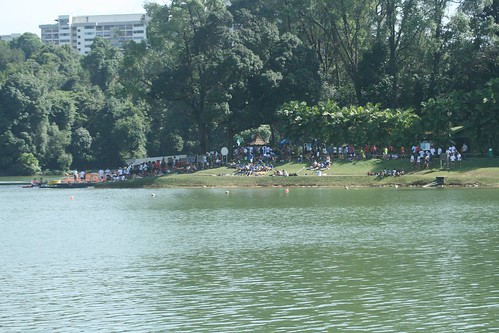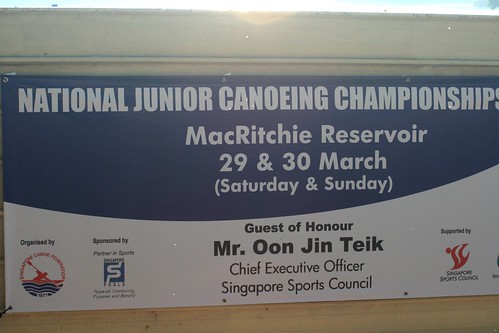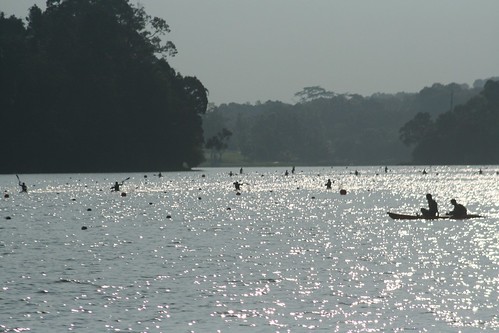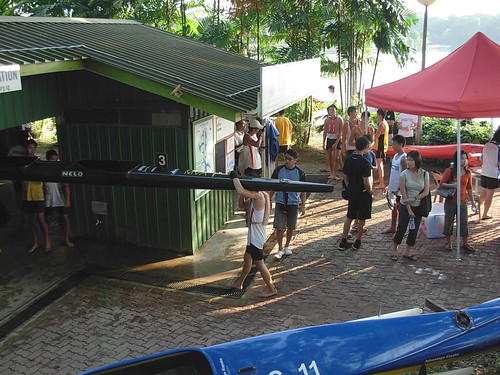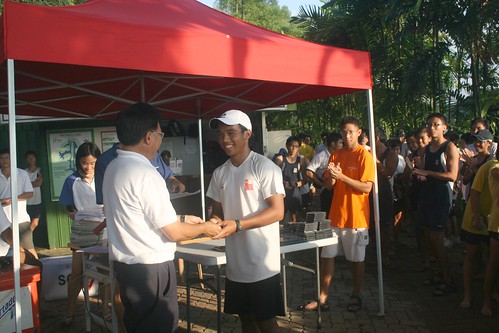 So it was a pleasant surprise when I came across “En Bloc”. That the drama has the lovely Andrea Fonseka is not the reason. I quickly recognized a few familiar landmarks. “En Bloc” was filmed using the backdrop of Pandan Valley, a condominium off Ulu Pandan Road. Lim Beng Teck’s Minmart was certainly on the void deck of Eugenia or Chempaka Court.
So it was a pleasant surprise when I came across “En Bloc”. That the drama has the lovely Andrea Fonseka is not the reason. I quickly recognized a few familiar landmarks. “En Bloc” was filmed using the backdrop of Pandan Valley, a condominium off Ulu Pandan Road. Lim Beng Teck’s Minmart was certainly on the void deck of Eugenia or Chempaka Court. Pandan Valley was the first private condominium built in Singapore and developed at the height of the property boom in 1975. It was left vacant until 1978 when the project was re-launched by DBS Land, the property arm of DBS Bank. Somehow Pandan Valley never gained popularity with expatriates or upper middle-income Singaporeans. Those people preferred Ridgewood, a condominium located behind Pandan Valley. Could it be the case that Pandan Valley was lying in District 21 and Richwood in District 10?
There were many other differences between Ridgewood and Pandan Valley. Ridgewood was built and owned by Dillingham Inc. Ridgewood offered a Hawaiian theme for its architecture and the garden-landscape, whereas Pandan Valley had largely a strong “Singaporean” influence of Spartan interior finishes and large floor spaces. The cheapest unit in Pandan Valley was priced at S$98,000 with tower block penthouses going for S$280,000 at that time. Pandan Valley was a mixed development, a first concept for any private sector housing project in Singapore. It had both retail space and residential units. There was the Yamaha Music School at the block nearest to Ulu Pandan Road.
There were many other differences between Ridgewood and Pandan Valley. Ridgewood was built and owned by Dillingham Inc. Ridgewood offered a Hawaiian theme for its architecture and the garden-landscape, whereas Pandan Valley had largely a strong “Singaporean” influence of Spartan interior finishes and large floor spaces. The cheapest unit in Pandan Valley was priced at S$98,000 with tower block penthouses going for S$280,000 at that time. Pandan Valley was a mixed development, a first concept for any private sector housing project in Singapore. It had both retail space and residential units. There was the Yamaha Music School at the block nearest to Ulu Pandan Road.
 Fig 1: Pandan Valley viewed from Jalan Jelita (circa 1977). The block on the extreme left is Ridgewood
Fig 1: Pandan Valley viewed from Jalan Jelita (circa 1977). The block on the extreme left is Ridgewood Fig 2: I am standing in the open space between Poinsetta Tower and Poinciana Tower (circa 1979)
Fig 2: I am standing in the open space between Poinsetta Tower and Poinciana Tower (circa 1979)
 Fig 2A: The swimming pool at Pandan Valley (circa 1979)
Fig 2A: The swimming pool at Pandan Valley (circa 1979)Before Pandan Valley was built, it was a hilly terrain with low vegetation. It was frequently used as a training area by 1 SIR in the early 1960s. 1 SIR was the original “tenants” of the former School of Military Medicine.
 Fig 3: The hills opposite 1SIR which would become the future Pandan Valley (circa 1958)
Fig 3: The hills opposite 1SIR which would become the future Pandan Valley (circa 1958)Will Pandan Valley go through an enbloc sale? Stay tune every Wednesday on Channel 5 as the drama unfolds.
 Fig 1: A military burial ceremony at the main entrance to the cemetery. The view is from the cemetery towards Ulu Pandan Road.
Fig 1: A military burial ceremony at the main entrance to the cemetery. The view is from the cemetery towards Ulu Pandan Road.  Fig 2: The graves and the chapel in the background
Fig 2: The graves and the chapel in the background Fig 3: The small chapel on the left of the main entrance. Beyond the gate were the graves. The old chapel could be on the slope of the Pine Grove main entrance
Fig 3: The small chapel on the left of the main entrance. Beyond the gate were the graves. The old chapel could be on the slope of the Pine Grove main entrance
.JPG)
.JPG)
.jpg)
.jpg)



 Pic 1: Indian barber shop in Lebuh Queen, Pulau Penang, Malaysia
Pic 1: Indian barber shop in Lebuh Queen, Pulau Penang, Malaysia Pic 2: New Star Hair Dressing Saloon at the corner of Upper East Coast Road and Woo Man Chu Road. Top Photo (circa 1963). Bottom Photo (circa 2007). On the left is the famous Malay frame-maker from a Malay kampong in Jalan Hajijah
Pic 2: New Star Hair Dressing Saloon at the corner of Upper East Coast Road and Woo Man Chu Road. Top Photo (circa 1963). Bottom Photo (circa 2007). On the left is the famous Malay frame-maker from a Malay kampong in Jalan Hajijah
 Pic 4:”Magic” Hair lotion and hair oil
Pic 4:”Magic” Hair lotion and hair oil